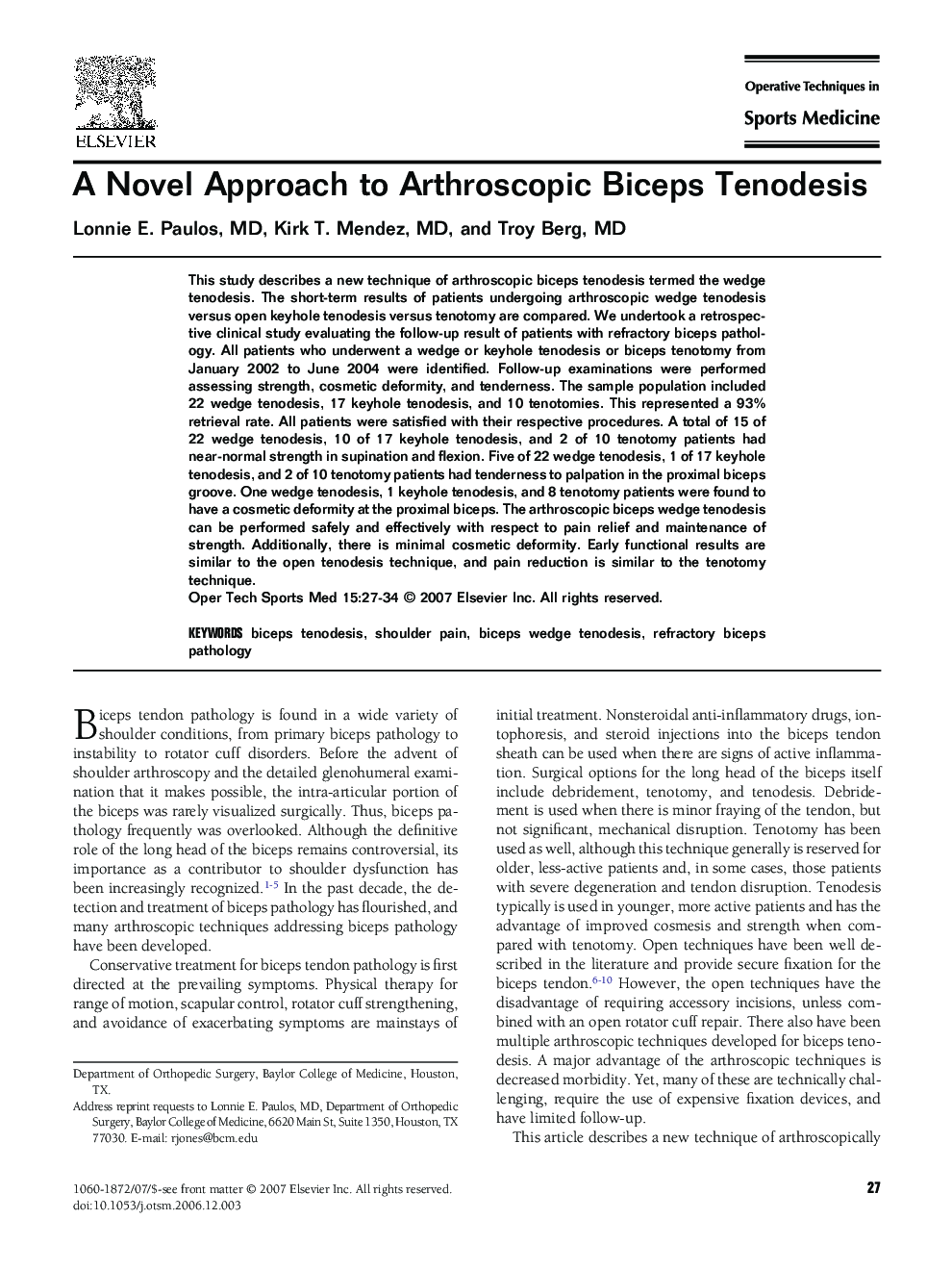| Article ID | Journal | Published Year | Pages | File Type |
|---|---|---|---|---|
| 4079883 | Operative Techniques in Sports Medicine | 2007 | 8 Pages |
Abstract
This study describes a new technique of arthroscopic biceps tenodesis termed the wedge tenodesis. The short-term results of patients undergoing arthroscopic wedge tenodesis versus open keyhole tenodesis versus tenotomy are compared. We undertook a retrospective clinical study evaluating the follow-up result of patients with refractory biceps pathology. All patients who underwent a wedge or keyhole tenodesis or biceps tenotomy from January 2002 to June 2004 were identified. Follow-up examinations were performed assessing strength, cosmetic deformity, and tenderness. The sample population included 22 wedge tenodesis, 17 keyhole tenodesis, and 10 tenotomies. This represented a 93% retrieval rate. All patients were satisfied with their respective procedures. A total of 15 of 22 wedge tenodesis, 10 of 17 keyhole tenodesis, and 2 of 10 tenotomy patients had near-normal strength in supination and flexion. Five of 22 wedge tenodesis, 1 of 17 keyhole tenodesis, and 2 of 10 tenotomy patients had tenderness to palpation in the proximal biceps groove. One wedge tenodesis, 1 keyhole tenodesis, and 8 tenotomy patients were found to have a cosmetic deformity at the proximal biceps. The arthroscopic biceps wedge tenodesis can be performed safely and effectively with respect to pain relief and maintenance of strength. Additionally, there is minimal cosmetic deformity. Early functional results are similar to the open tenodesis technique, and pain reduction is similar to the tenotomy technique.
Keywords
Related Topics
Health Sciences
Medicine and Dentistry
Orthopedics, Sports Medicine and Rehabilitation
Authors
Lonnie E. MD, Kirk T. MD, Troy MD,
